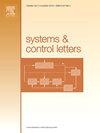连续时间高斯框架下具有延迟的指数效用最大化
IF 2.5
3区 计算机科学
Q3 AUTOMATION & CONTROL SYSTEMS
引用次数: 0
摘要
本文研究了在投资者被告知风险资产价格有时滞变化的情况下,连续时间指数效用最大化问题。这导致了一个非马尔可夫随机控制问题。在风险资产由高斯过程给出的情况下(带有一些附加性质),我们建立了最优控制的解和相应的值。我们的方法是纯概率的,基于Shepp(1966)和Hitsuda(1968)提出的高斯测度的Radon-Nikodym导数理论。本文章由计算机程序翻译,如有差异,请以英文原文为准。
Exponential utility maximization with delay in a continuous time Gaussian framework
In this work we study the continuous time exponential utility maximization problem in the framework of an investor who is informed about the risky asset’s price changes with a delay. This leads to a non-Markovian stochastic control problem. In the case where the risky asset is given by a Gaussian process (with some additional properties) we establish a solution for the optimal control and the corresponding value. Our approach is purely probabilistic and is based on the theory for Radon–Nikodym derivatives of Gaussian measures developed by Shepp (1966) and Hitsuda (1968).
求助全文
通过发布文献求助,成功后即可免费获取论文全文。
去求助
来源期刊

Systems & Control Letters
工程技术-运筹学与管理科学
CiteScore
4.60
自引率
3.80%
发文量
144
审稿时长
6 months
期刊介绍:
Founded in 1981 by two of the pre-eminent control theorists, Roger Brockett and Jan Willems, Systems & Control Letters is one of the leading journals in the field of control theory. The aim of the journal is to allow dissemination of relatively concise but highly original contributions whose high initial quality enables a relatively rapid review process. All aspects of the fields of systems and control are covered, especially mathematically-oriented and theoretical papers that have a clear relevance to engineering, physical and biological sciences, and even economics. Application-oriented papers with sophisticated and rigorous mathematical elements are also welcome.
 求助内容:
求助内容: 应助结果提醒方式:
应助结果提醒方式:


